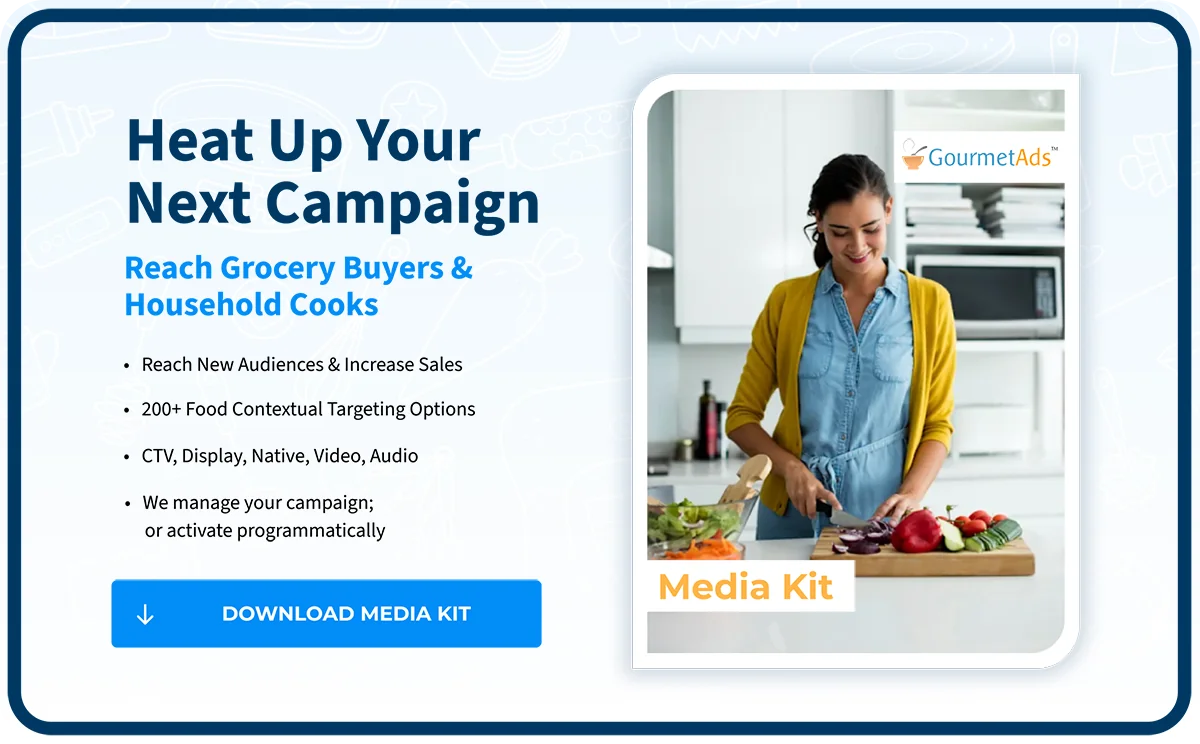Food Advertising
Gourmet Ads is the global leader in Food Advertising Solutions. Since 2008 we’ve worked closely with all types of Food Advertisers and their advertising agencies, from global food companies which market hundreds of brands, through to traditional / smaller and regional food companies. Depending on the type of Food Advertiser, our approach will be very different. We have compiled a list of food advertisement examples to show creativity in ads. For example a large multi national food brands tend to run national campaigns highly focused on brand lift and engagement. Whereas regional food companies through to smaller / local companies which will focus on results-oriented direct response campaigns which are highly geotargeted. The Gourmet Ads platform caters for both.
Food marketing to children has become important in this digital world. Some food products are healthy for children while some are dangerous for them. This unhealthy food is spreading chronic diseases in several countries. It is the need of the hour to do beverage marketing carefully. Foods marketed in ads shows must be healthy for younger children. Food marketing is an important skill because the food industry is growing and food marketers should show healthy foods. Your advertising techniques must be effective as well as healthy. Taco bell is a great example of companies that avoids unhealthy food in their ad shows. Children’s programs may show cartoon characters in their marketing ads but these characters should promote a health-conscious diet. There are several food choices for children in the market. Children should try to purchase healthy food for themselves. A comprehensive review of food must be taken before purchasing it. For example, some people think Panera bread is healthier than a piece of regular bread. But, in reality, it is not healthier than a regular bread. Therefore, we can say that the marketing of food is important.
Childhood obesity puts kids and teenagers at risk for adult obesity and its related health problems, including diabetes, cardiovascular disease, and several types of cancer. The goal of prevention must be to stop youngsters from gaining too much weight as they become older. A responsible food advertising agency must consider this issue to protect children from unhealthy food. Children nowadays, between the ages of 8 and 18, consume a variety of media (sometimes concurrently), and they spend more time (44.5 hours per week) in front of screens than doing everything else in their life, with the exception of sleeping. Increases in non-nutritious food promotion have been linked, according to research, to rising childhood obesity rates. Health became a concern for many families. That’s why parents stop their children to avoid eating candy. They told them not to purchase beverages from schools. They advised their children to take a comprehensive review of ingredients before purchasing them. To protect children, food marketing to children should be regulated.
Consumers do not think about their health. They do not research properly before purchasing a product. This is the reason diseases are getting more common in other countries. Disease control companies are advising consumers to take a comprehensive review of the ingredients. They advised consumers to avoid healthy food. Federal trade commission precautions against unhealthy food. Weight Watchers Diet Targeting can be used to target people with obesity to improve their health. The Rudd Center for Food Policy and Obesity is a non-profit organization that conducts research and develops public policy with the goals of enhancing global food, avoiding obesity, and lowering weight prejudice and stigma. Rudd Center recommends that marketing to children should be specific. It advises parents to do proper research before grocery shopping. According to Rudd Center, food advertising companies should avoid unhealthy food in their ads.
Due to a lack of research on food and food marketing, diseases are spreading in the world. Proper research should be conducted on this topic. Schools can contribute to food research by teaching kids the nutritious value of food. Schools should offer healthy snacks to students and teachers. Some research on beverages must also be conducted by research centers. Rudd Center has conducted some research on snacks and beverages. However, more research is needed on this topic. Online and free information about food products should be encouraged in schools. Students can also get information about healthy foods by reading books. Schools can find creative ways to increase the interest of students in healthy foods. Every brand must avoid unhealthy food. Sugary drinks are often associated with health. During food styling, food brands must not use unhealthy food techniques. Media advertising has created brand loyalty in consumers. Therefore, customers do not think about the disadvantages of sugary drinks because they are brand loyal. The only problem with this media advertising is that people purchase products while neglecting their health. They purchase snacks but do not look at their nutritious value. Sometimes, they purchase online snacks which do not contain any information about ingredients. Ultimately, it affects their health. This unhealthy food affects their stomach. Moreover, it is causing several diseases. Disease control has become extremely important due to this negligence. Hence, agencies are trying to improve their marketing techniques to prevent diseases.
Fast food has gained popularity in recent times. Many people assume that it is harmful. They do not try to find nutritious value in fast food. Therefore, marketing agencies can help people to increase their awareness of fast food. Fast food ads have a lot of potential in this digital age. Billboards, social media, and tv ads are a few examples of types of advertising that fast food chains use to attract customers and increase sales. Young people use mobile to find information about food. If food marketing agencies properly do food marketing then they can increase their sales by manifolds. Food marketing agencies can use social media to increase awareness about food. Many food brands utilize food blog advertising to introduce their products to consumers. They can post pictures and infographics to highlight the negative impacts of unhealthy food. Similarly, beverage marketing can also be improved by food advertisement. Beverage marketing agencies may use ad to increase their target reach. These agencies can also create awareness about beverages by showing the positive effects of beverages. Beverage marketing agencies have used the ad to create awareness about health. Agency holding companies play an important role in food advertising. Television ad has been used by beverage marketing agencies to broaden their target markets. The manufacturer of the beverage must demonstrate how his product differs from those provided by the rivals. Customers must be able to perceive how the new beverage will benefit them more than their existing option does. Marketers can highlight the new beverage’s superior flavor, healthier components, or more potent effects compared to competing items that will be displayed next to it on shop shelves.
Food Advertising Tricks assist companies in promoting food in a variety of ways in order to reach the public. The purpose of food advertising campaigns has evolved throughout time. Many food ads emphasize the availability of healthier choices after hearing years of criticism of the detrimental consequences of an unhealthy diet. While doing champagne targeting and alcoholic targeting, our Gourmet Ads team always emphasizes healthy advertising. Now, food marketing companies have started thinking about shunning unhealthy food in their advertisement. Food marketing does not remain as easy as it was a few years ago. There are specialized marketing techniques to promote food. Fast food companies are embracing new marketing techniques to increase their sales. Similar studies have shown that beverage marketing has also changed significantly. The food and beverage marketing industry has seen rapid growth in recent times. The popularity of online purchasing is rising. Consumers may simply and swiftly purchase food products thanks to the Internet. Therefore, agencies can use digital marketing tools to increase consumer knowledge.
Digital media are being used more often by food and beverage marketers to spread product awareness and encourage product testing. Clients are using their smartphones more and more often every single year. These prospective customers are also reading fewer newspapers, watching less television, and listening to less radio. The distribution of the advertising budget is changing as a result of this change in behavior. In recent years, children and teenagers have been seen as a significant market force in the US food and beverage business. Children and teenagers are increasingly the focus of intensive and focused food marketing and advertising campaigns. Due to their potential purchasing power, influence, and status as future adult customers, food marketers are particularly interested in young people as consumers. To establish brands and sway young people’s purchasing habits, several strategies and channels are employed to connect with them starting when they are infants. Television advertising, in-school marketing, product placements, kids clubs, the Internet, toys, and items with brand logos, and promotions geared for young people, such as cross-selling and tie-ins, are just a few of the food marketing channels that are used today. Foods sold to children typically include a lot of sugar and fat, which is against official nutritional guidelines. Some fast food restaurants provide sugary drinks and unhealthy foods to children which make them obese. The food and beverage industry does not realize the impact of unhealthy food on children. Their marketing techniques highlight that these sugary drinks are healthy. They use television commercials to show the positive impacts of fast food. For example, Coca Cola and Burger King use television food advertising to attract children. In certain circumstances, food marketers promote unhealthy food in their ad. They do not realize the implication of their ad on children’s health. That’s why RUDD Center encourages food and beverage marketers to avoid unhealthy food in their ad. Health should be the primary importance of any food marketer when creating an ad for his/her company.
Below are some of the Food Advertisers we’ve run programmatically over the last 30 Days.
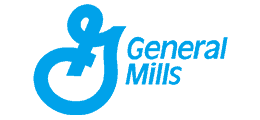
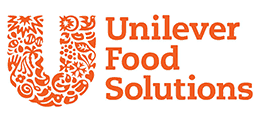
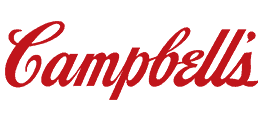
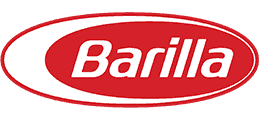
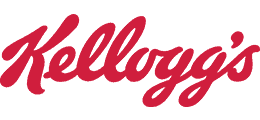
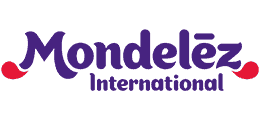

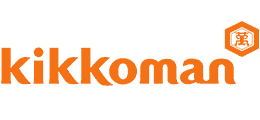
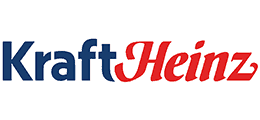

Supermarket Advertising is a strong, flexible, and cost-effective choice that offers a significantly higher return on investment at grocery stores shopping. Reaching the market is a major accomplishment for new brands and companies. Supermarket advertising easily attracts new customers.
Benefits of Programmatic Advertising in Supermarket
In relating publishers and potential advertisers, programmatic advertising refers to the purchasing and selling of digital ad space through automated systems. Market for publishers is so vast, programmatic advertising gives marketers an immense reach because of it. Local businesses can easily be highlighted through programmatic advertising. It is especially useful for small and large businesses.
Streamline buying and selling process
The demand for programmatic advertising will only grow as tools to streamline the process of buying and selling digital ads become more in demand. As digital marketing keeps on rising and maintains its position as the primary means by which marketers communicate their advertisements to prospects, it will become increasingly necessary. Supermarket advertising encompasses almost all aspects of marketing and advertising. Therefore, the debate between marketing vs advertising for this technique is not valid.
Effective Advertising Solutions to target grocery shoppers
By using effective strategies through economical advertising solution that gives your company a huge exposure to customers engaging online shopping experience by showing customers different promotions or adverts online platform will help to make loyal repeated customers.
Gourmet ads can assist you in that so many businesses are struggling in that. Knowing your business, how your services or products fit in, who your ideal customer is, and many other factors are essential for creating captivating commercials.
In that time, we’ve released outstanding supermarket advertisements and appealing promotions created specifically to meet the demands, obstacles, and objectives of each customer.
We can likewise influence customers through creative advertisment solution to make purchases for your company. With the right marketing strategy, you can run your online supermarket chain very smoothly.
Boost Your Marketing by Running a Successful Supermarket Advertising / Food Advertisements
One of the best ways to present your brand to your customer is through supermarket advertisements. However, in order to create a successful supermarkets advertisement, you must make sure that it is simple to read, pleasant to the eye, and appealing to your audience. In recent years, the usage of agency holding companies has grown in popularity, particularly in the grocery and food advertising sectors.
Digital Grocery Stores Attraction
Digital marketing appeals different advertisers, marketers etc. Online advertising is for CPGs of different brands or small businesses so that customers are prepared to make purchases shortly. It’s the fact that more people visit online stores is a motivation for them to find something good. Thus, CPG firms bid on point of purchase ad spaces during online shopping.
Native advertisment can enrich online shopping experience for multiple brand and increase customer loyalty. Gourmet ads worked with world’s largest Supermarket Advertisers running branding or targeting Campaigns to Supermarket Loyalty Program Members and which is also helpful for the grocery stores. Native advertising examples show that native advertisement is a great way to attract customers to digital grocery stores. There are different ways to create digital attraction of customers through:
- Ads that are interesting and functionally compatible with your branded website
- Offers and suggestions for relevant product
- New possibilities for finding products online
Ad repetition is given by the receipt. Because consumers frequently shop at the same grocery store, register tape advertising also has the advantage of enabling advertisers to track the effectiveness of their campaigns. Advertising on register tape can be seen in both large and small grocery stores.
Help connect the local businesses
Register tape advertising is a medium in which advertisements and coupons are placed on receipts at supermarkets and national retailers. Local businesses can use this type of advertising to reach a local demographic, and the low production costs allow businesses with limited advertising budgets to participate. Brand may create awareness through register tape advertising on the receipts from supermarkets and large shops online. Local businesses may effectively target local consumers with this form of advertising.
Grocer data is used to find the right target audience through tape advertising. We can build subconsious brand and market awareness in order to provide a comprehensive data by viewing receipt advertising .
Despite the continuous growth of food shopping online, supermarkets continue to be the best place to reach customers to the local businesses across the nation. It will help to bring local residents and local business together. Our supermarket advertising provide companies a chance to connect with local customers.
Being present at the right time and place
Digital supermarket advertisements such as food, and beverages are handy and easy and in this, you may alter the advertisement time and day. Depending on what individuals frequently buy during various times, this can involve advertising different deals or promotions during lunch or after work.
By combining the year-over-year growth in the awareness and consideration components at the Gourmet ads we were able to construct a composite success score. We then used machine learning algorithms to identify the most effective retail and advertising tactics to raise the overall rating of the site. Brands may overlook the need of taking into account the neighbourhood shoppers while learning how to promote at a supermarket.
One of the most common food advertisement examples in supermarket advertising is product packaging. Food packaging is intended to catch the attention of customers while also conveying important information about the product, such as nutritional value, ingredients, and cooking instructions. Proper advertisement of grocery products such as food, beverage stores etc will appeal to customers, inspire them, and draw their attention to special offers in order to gain their interest and engagement.
Gourmet ads can assist you in running successful business if you want to make your supermarket advertising get highlighted in the audience but you are unsure of where to begin. Our marketing teams provide efficient advertising solutions for our clients to run their businesses successfully.
Since 2008, Gourmet Ads has run hundreds of Supermarket Advertising campaigns aimed at reaching the household grocery buyer online. In that time, we’ve worked with some of the world’s largest Supermarket Advertisers running Branding Campaigns or Campaigns targeted to Supermarket Loyalty Program Members.
Below are some of the Supermarket Advertisers we’ve run programmatically over the last 30 Days.
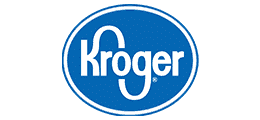






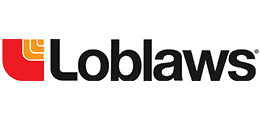
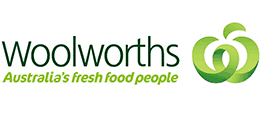

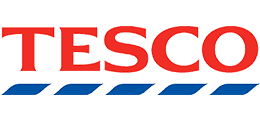

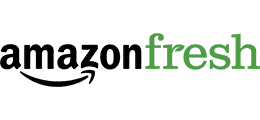
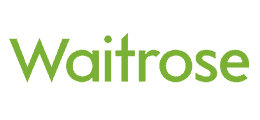
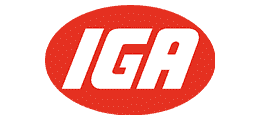
Gourmet Ads works closely with our sister company, Healthy Ads to deliver a range of Healthy Advertisers. Starting with healthy meal delivery services and diet plans programs, dominate our Healthy Advertisers with year-round advertising campaigns targeting customer acquisition. Apart from delivery and programs, we also have many Healthy Advertisers who run campaigns for their products with can be found in grocery stores and healthy food stores as part of your weekly shopping. An example of which is our Weight Watchers Diet Targeting which emphasizes on targeting diet-conscious people. Every healthy branding campaign is different, with different target audiences and different goals.
Below are some of the Healthy Advertisers we’ve run programmatically over the last 30 Days.

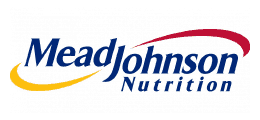



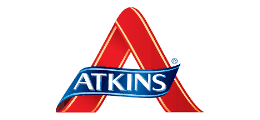




Since 2008, Gourmet Ads has run hundreds of Alcohol Advertising campaigns aimed at reaching consumers in market. In that time, we’ve worked with some of the world’s largest Alcohol Advertisers running Branding Campaigns across Display, Video and Native Media Formats. In addition, the majority of our inventory is LDA compliant.
The promotion of alcoholic drinks by alcohol manufacturers through a variety of media is known as alcohol advertising. Alcohol advertising is one of the most strictly controlled kinds of marketing, right up there with cigarette promotion. Some nations outlaw all or portions of alcohol advertising. Therefore, alcohol marketing has become an important domain in marketing practices.
Advertising any form of alcohol might be challenging, but it is crucial to have defined brand guidelines, internal training programs, and particular rules. Alcohol companies have begun to use native ad specs to promote their products without being too intrusive or assertive. This is because laws and cultures vary from nation to nation in the global market, agencies and brands must first construct a global communications framework before establishing localized guidelines. Many people get confused between alcoholic targeting and champagne targeting. You must be aware of cultural variations and how the intended audience will react to the advertisement. It might be challenging to make such choices sometimes, collaborating with a local creative firm that is familiar with the community and has relevant experience is seen to be an effective strategy.
In order to implement a sound plan intended to reach a larger audience, it is crucial to understand the numerous regulations that surround sectors like alcohol. Alcohol businesses are better able to adopt strategies that increase customer conversions when they have audience profiles and data-driven insights. Due to the increased market rivalry brought on by the growth of microbreweries and distilleries, it is crucial to investigate different digital marketing funnels. The alcohol sector is very much at the forefront of branding and digital reach activities, despite stringent advertising and marketing regulations as well as age limits. However, developing alcohol branding and marketing strategies may still be quite challenging.
Actually, it’s fairly simple to promote beer brands as entertaining without supporting negative habits. Simply work backward from a pleasant event (celebrations, social gatherings) rather than a problematic one to create your ideas (job loss, partner loss, loneliness, anxiety in a social situation). Alcohol companies should focus on the good aspects of drinking alcohol. Although it is their responsibility to show both good and bad effects of drinking alcohol in their ads. Alcohol beverage advertisers must study health behavior to appropriately target audience.
Alcohol ads should show the legal drinking age of consumers in every country. Many countries have strict restrictions on alcohol consumption. Studies suggest that higher consumption of alcohol will lead to an increased risk of heart diseases. It has a significant effect on public health. Alcohol beverage advertising is not simple at all. Beverage alcohol advertisers should think about public health in their television ads.
With very few exclusions, alcohol beverage advertisements must provide the following information: Wine class, kind, or distinctive designation to which the product belongs, consistent with the information stated on the authorized label; Name and address (city and state) of the permittee responsible for the advertisement. Consider red wine with natural tastes, white wine, sparkling wine, champagne, Bordeaux, or Cabernet Sauvignon and Chardonnay. Their names must be mentioned on the label. Class and type that the product falls into should match the details on the authorized label. For instance, neutral spirits with a natural taste and caramel color; whiskies, gins, and brandies; vodka, bourbon whiskey, and cognac; neutral spirits; the alcohol content is expressed as a percentage by volume (proof may be included as supplementary information) and name of the commodity and the necessary percentage of neutral spirits for various distilled spirits.
The United States Department of the Treasury’s Alcohol and Tobacco Tax and Trade Bureau, commonly abbreviated as TTB and officially known as the Tax and Trade Bureau, is responsible for regulating and collecting taxes on the domestic trade and import of alcohol, tobacco, and guns. Due to the First Amendment, strong safeguards for free speech, the government is far less able to control honest, non-deceptive alcohol advertising due to worries about its attraction to children. TTB regulates alcohol beverage advertising but it does not completely ban it. TTB does not outrightly prohibit promotional materials of the alcohol industry. Industry members use self-regulatory standards to avoid publication bias.
TTB market compliance professionals independently check advertising to make sure they are legal. The types of alcoholic beverages advertised vary (beer and malt beverages, wine, and distilled spirits). The following details must be provided by them: Malt liquors and beer the group to which the product belongs (e.g., ale, stout, lager, etc.), advertiser’s name and contact information, including city & state and kind of wine (e.g., red wine, sparking wine, white wine, champagne, etc.)
In order to lessen the extent to which alcohol advertising targets teenagers through location or message, the Federal Trade Commission has long urged the alcohol industry to create and abide by self-regulatory guidelines. The majority of alcohol marketers have vowed to adhere to one of three voluntary self-regulatory guidelines intended to reduce teen targeting.
Consider submitting a complaint if you think an advertisement violates the law. You can file a complaint with the Beer Institute (link is external) for beer commercials, the Wine Institute (link is external) for wine ads, the Distilled Spirits Council (link is external) for complaints involving distilled spirits ads, or ads for wine or beer by distilled spirits firms.
Alcoholic advertising’s goal is to increase brand awareness among prospective buyers. The same strategies are used whether the brand targets the beer, wine, or liquor markets. The manner in which the marketing message is conveyed, however, frequently varies by platform and generation. Most alcohol advertisers’ brands will fall behind if you use the right strategies to target the market for alcohol content.
The alcohol beverage industry is booming. The top 10 beverage companies in the world have long dominated the industry; they continue to be some of the top suppliers of customers’ favorite drinks and among the main drivers of industry development. The global beverage industry is anticipated to face some challenges as consumers shift their awareness and purchasing habits toward healthier and more flavorful beverages. The top 10 beverage companies in the world are also anticipated to implement some new strategies to maintain their market shares in the near future.
Now-a-days, we see advertising practically wherever we go: on television, on buses, on the streets, and online. Advertising for alcohol is not an exception. In addition, Champagne targeting ads and alcohol ads, like most advertising, make the product appear amazing. Alcohol advertisements usually associate a brand with attractive, alluring persons and an appealing pastime. Alcohol advertisements use a variety of devices to convey messages, such as this product is for individuals like young people; this alcohol product makes events better; this product is trendy, or stylish, or innovative; people want to be seen drinking this product. In the end, these ideas indicate that if young people use this product, they can be successful, attractive, and cool like the individuals in the advertisement, having fun like they do. In order for the top beverage companies to preserve their competitive advantage over rivals, the sector has experienced an increasing number of mergers, acquisitions, and new products in recent years.
Over time, the target market for alcohol advertising campaigns has shifted, with certain firms now particularly catering to a certain demographic. Some alcoholic beverages, particularly beers, are traditionally associated with men. According to rumors, certain brands have been created especially to appeal to consumers who wouldn’t often consume that type of beverage. These advertisements can encourage excessive drinking and underage drinking.
Young people are also more likely to drink as a result of alcohol advertisements. Young individuals who saw alcohol advertisements on television, in-store displays, or in publications were more likely to drink alcohol than young people who did not, according to research collated by CAMY. It is also found that underage children who reported higher mean levels of alcohol advertisement exposure drank more. Therefore, it can be concluded that subsequent adolescent alcohol use is related to more exposure to alcohol advertising exposure.
An economic analysis in the United States evaluated the impact of alcohol advertising on young people’s drinking habits by comparing recorded levels of youth drinking with in-depth information on alcohol advertising in local markets over the same years. According to the data, a total prohibition on alcohol promotion might lower monthly levels of young drinking by 24% and youth binge drinking by roughly 42%.
Alcohol advertising companies have sworn to self-regulate to protect youngsters from seeing alcohol related ads. These standards specify how businesses should display their advertisements on television, websites, social media, radio stations, and more. They also mandate that businesses keep an eye on how their brand is utilized to make sure that it isn’t being targeted toward young people.
The alleged targeting of young people by alcohol advertisers is one area where the industry has come under fire and laws have been strengthened. The creation of alcopops, beverages with names that may appeal to a younger audience and a sweet flavor, is key to this. According to academic research, taste is the primary element affecting young people’s intake of alcopops, and alcohol advertisements have a significant impact on young people.
The Federal Trade Commission supervises compliance with the regulations. In order to identify ways of fraud and decide how to best deploy its resources, the Federal Trade Commission also gathers complaints about potentially dishonest business practices, identity theft, and privacy issues. However, the Federal Trade Commission does not address specific consumer complaints. Alcohol beverage advertisements do not need to be authorized before appearing in print or on television, as stated by the Federal Alcohol Administration Act. The federal law limiting the mention of alcohol content on beer labels was unanimously overturned by the court.
Regulations on alcohol marketing can be used to safeguard vulnerable populations, notably children and young adults. These rules are designed to reduce the amount of advertising that minors see on broadcast, in print, online, and on social media. In addition, they may be used for sponsorship, product name, labeling, and packaging, as well as point-of-sale materials and branded promotional merchandise.
Challenges specific to the marketing of beer, wine, and distilled spirits exist. A complex web of federal and state regulations govern the types of activities that are acceptable for promoting alcoholic beverages, in addition to lottery laws (under which promotions featuring the elements of prize, chance, and consideration are prohibited), consumer disclosure laws, trade practice laws, and other laws.
The World Health Organization (WHO) has stated that restrictions must be placed on alcohol advertising and promotion. A Framework for Alcohol Policy for the Region was established by the WHO Euro Region. “All children and adolescents have the right to grow up in an environment protected from the harmful effects of alcohol consumption and, to the degree feasible, from the advertising of alcoholic drinks,” is one of the document’s five ethical tenets.
Sending a photographer to the event to capture photos of attendees is one example of how alcoholic beverage companies make use of their sponsorship of music festivals. The individuals in the images frequently tag themselves and share this with their friends once the photos are uploaded on the Facebook page. This enables the alcohol firm to get additional information about the young person in order to continue promoting them through contests and engaging in cultural debates.
Parents might be advised that by making sure their children don’t visit bars and clubs, they can significantly lower the risk that they will consume alcohol and encounter issues related to it. To lessen adolescent drinking and associated issues at home or in other contexts, an alternative message for parents might be created. Parents might be advised that general supervision may not lessen the probability that their teenagers would consume large amounts of alcohol at their own or another person’s house. In some circumstances, greater adult supervision may be required.
From our perspective Alcohol Advertising encompasses all Alcohol products. Obviously both Wine and Beer, as well as Spirits, Liqueurs and Distilled products such as Vodka, Whiskey, Brandy, Vermouth, Cognac, Rum and Gin. We also include Cider, Alcopops and Caffeinated Alcoholic Beverages.
We work all types of Alcohol Advertisers from Multi National Alcohol Brands down to small / independent companies creating craft or artisan beverages.
Below are some of the recent Alcohol Advertisers we’ve run programmatically:

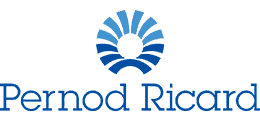


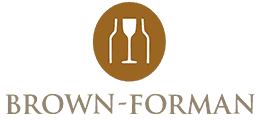


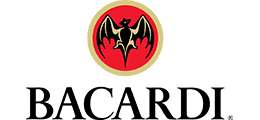
Since 2008 we’ve worked closely with all types of Wine Brands and their Advertising Agencies to deliver their advertising messages directly next wine and recipe content.
Some wine brands choose to broadly reach the everyday wine consumers market with “everyday” drinking wines. Whilst other wine brands are chasing that high value individual or wine connoisseur who buys at the top end of the wine market. Irrespective of your target Gourmet Ads can help you reach your target market online. We represent both large wine review sites as well as niche wine blogs. With this in mind, we’ve collated a list of wine advertising blogs which will help you understand more about online and how you can execute successful online wine advertising campaigns. In addition, the majority of our inventory is LDA compliant. Besides wine advertising, we also offer specialized champagne targeting and alcoholic targeting. Moreover, champagne targeting ads make the product appear amazing. Also, it is associated with these ideal experiences in order to appeal to customer goals and desires.
We have a wide range of wine advertisers, from large multinational wine companies, independent / family wine brands, wine retailers, wine refrigerators and wine accessories. Below are some Wine Advertisers we’ve seen in the past;
Below are some of the Wine Advertisers we’ve run programmatically over the last 30 Days.





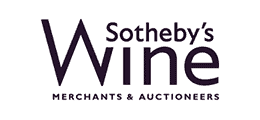

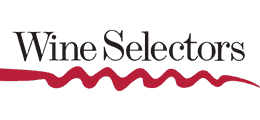


Since 2008, Gourmet Ads has run a wide variety of Beer Advertising campaigns aimed at reaching consumers in market. From working with some of the world’s largest Beer companies and breweries running Branding Campaigns across Display, Video and Native Media Formats.
Apart from running advertising campaigns for global Beer Brands, we’ve run Craft Beer Advertising for more small, independent breweries creating unique craft beers or artisan beers mostly using local ingredients. We’ve also run eCommerce focused beer advertising campaigns, including Monthly Beer Clubs both of which trend towards acquisition type campaigns compared to high reach branding.
The majority of Beer Advertising campaigns are targeted towards a male audience; however, we have run campaigns aimed at female audience, especially with the low carb beers and low-calorie beer options. In addition, the majority of our inventory is LDA compliant.
Below are some of the recent Beer Advertisers we’ve run programmatically;
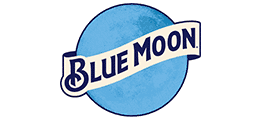


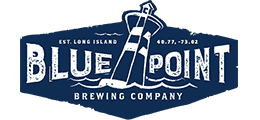

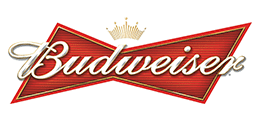
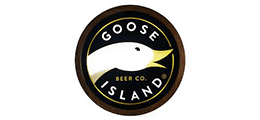
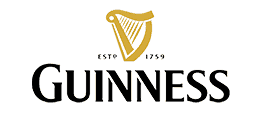
Gourmet Ads is the global leader in Recipe Advertising Solutions. Since 2008 we’ve worked closely with all types of Food Brands and their Advertising Agencies to deliver their advertising messages directly next to recipes. We’ve strived to deliver contextual targeting solutions to not only advertise next to a recipe, but we ensure you’ll advertise next to a relevant recipe. For example, a Chicken brand can advertise next to a Chicken Recipe.
When it comes to Recipe Advertising, Food and Alcohol advertisers generally decide on one of two strategies. The first is they run creative featuring imagery of a recipe and if you click through, you’re taken to their recipe in their recipe guide. The second is actually publishing the entire recipe within the advertising creative. Adding recipes to your creative messaging shows that a product is versatile allowing consumers to create a special recipe.
Let’s Get Started !
Let the Gourmet Ads team walk you through all the options available to ensure that your Food, Supermarket, Beverage or Kitchen advertising campaign has the best possible combination of Premium Guaranteed Inventory, Scale, First Party Data, Contextual Targeting and Programmatic Advertising elements.







